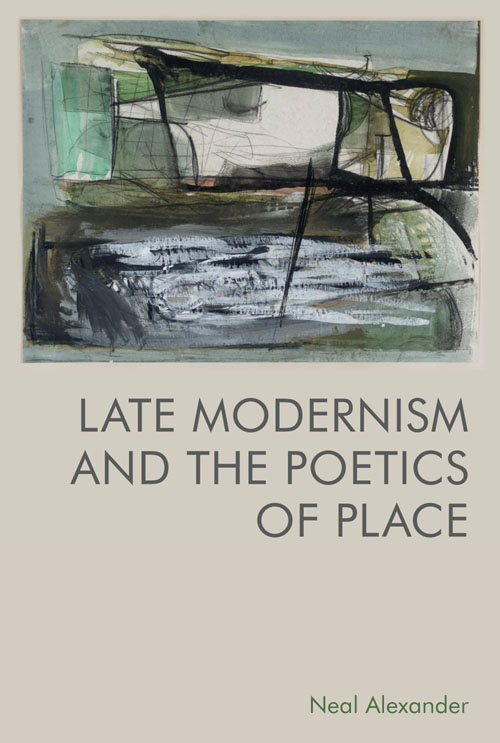
Late modernist poetry flourished on both sides of the Atlantic in the three decades after the end of the Second World War. Adapting or recasting the formal experiments of their modernist forebears, poets such as Basil Bunting, Lorine Niedecker, and Charles Olson write luminously about the relationships between humans and non-humans in particular places. Here is a brief tour of five places where modernism survived well into the second half of the twentieth century.
Brigflatts, Cumbria
Born in Tyneside in 1900, Basil Bunting spent childhood summer holidays in the tiny Cumbrian hamlet of Brigflatts, which is the site of a seventeenth-century Quaker meeting house. This out-of-the-way place becomes the focus for Bunting’s magnum opus, Briggflatts (1966), a brilliant long poem that reflects upon the landscapes and violent histories of his native Northumbria. Written in compressed but highly musical verse, the poem depicts the North of England as a crossroads or meeting place where different peoples, languages, and cultural traditions interweave over millennia: ‘sinews ripple the weave / threads flex, slew, hues meeting / parting in whey-blue haze’.
Black Hawk Island, Wisconsin
Lorine Niedecker lived almost all of her life in Black Hawk Island, a low-lying, flood-prone strip of land on the banks of the Rock River where it enters Lake Koshkonong, in south-east Wisconsin. This wetland environment of swamplands, riverbanks, and lake shores is the major stimulus for her spare, minutely attentive poetry of place, which registers its sights and sounds, the changes of the seasons, and the behaviour of her neighbours – human and non-human – with sympathy and subtle irony. Influenced by Objectivism and Surrealism, as well as folk verse and Japanese poetry, Niedecker’s poems are drawn to places on the edge, between land and water, human culture and natural habitats: ‘born / in swale and swamp / and sworn to water’.
West Penwith, Cornwall
Raised in the shipbuilding port town of Greenock on the Firth of Clyde, W.S. Graham spent most of his adult life at the other end of Britain, on the West Penwith peninsula in Cornwall. Memories of Greenock and its hinterlands recur obsessively in his poems but are often entangled with the landscapes and seascapes of his adopted home, so that his texts characteristically move imaginatively between places, collapsing spatial and temporal distances in the condensed geographies of the page. Pre-eminently a poet of night and the sea, especially in his long poem ‘The Nightfishing’ (1955), Graham composed some of his best work while working shifts as an auxiliary coastguard in the lookout post at Gurnard’s Head: ‘Images of night / And the sea changing / Should know me well enough’.
Gloucester, Massachusetts
Charles Olson’s sprawling late modernist epic, The Maximus Poems (1960-75), takes the port city of Gloucester, one of New England’s oldest colonial settlements, as the focus for its eccentric, wildly ambitious account of humankind’s westward migrations over four millennia. Obsessed with Gloucester’s history as a deep-sea fishing port, he depicts it as an amphibious ‘sea city’, situated at the interface between terrestrial and maritime worlds. The son and grandson of immigrants from Sweden and Ireland, Olson also emphasises its character as a multi-ethnic, polyglot place, enriched by the presence Portuguese, Italian, English, and Scandinavian settlers over the centuries: ‘As the people of the earth are now, Gloucester / is heterogeneous and so can know polis’.
Bronzeville, Chicago, Illinois
Gwendolyn Brooks once remarked that all she needed to do to find the material for her poems was to look out the window of her kitchenette apartment on East 63rd Street. Brooks is quintessentially the poet of Bronzeville, a historically black urban community in Chicago’s South Side, which was also a vital cultural hub for writers, artists, and musicians from the 1930s to the 1960s. Documenting the everyday lives of its African American citizens, Brooks’s work fuses realist and modernist aesthetics to depict Chicago’s black metropolis as a place-in-process rather than simply a place apart, one repeatedly reconfigured by the social forces of migration, racial segregation, and urban redevelopment: ‘Mrs. Coley’s three-flat brick / Isn’t here any more. / All done with seeing her fat little form / Burst out of the basement door’.
Neal Alexander lectures in English literature at the University of Nottingham. You can read more about his new book, Late Modernism and the Poetics of Place here. If you want your copy, save 30% with discount code EVENT30 at checkout.





